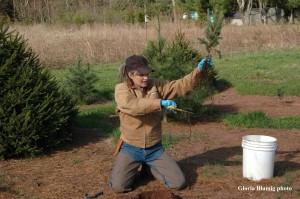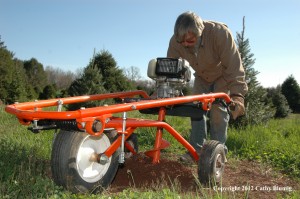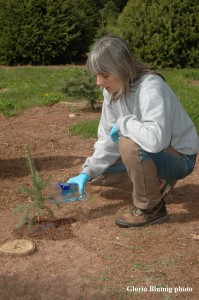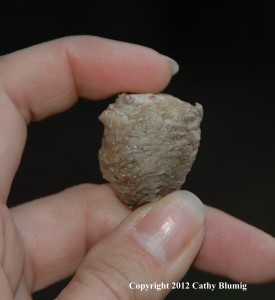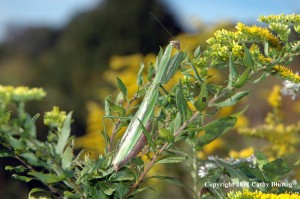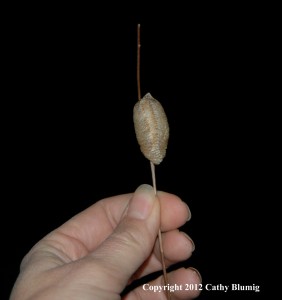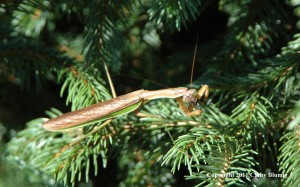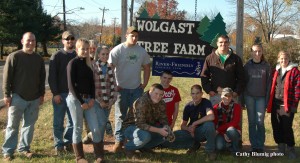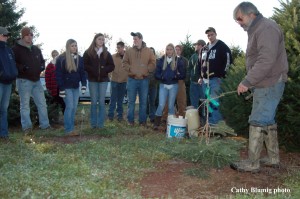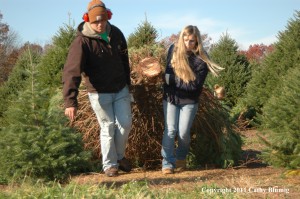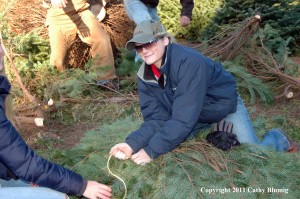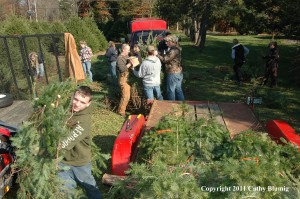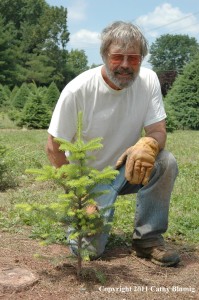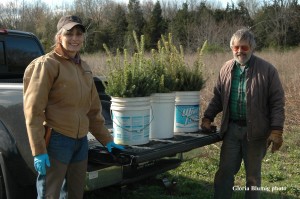
Some of the 700 trees - in this case Colorado blue spruce - that the two of us planted in early April.
We spent the early part of April “planting the future” here at Wolgast Tree Farm, which means we planted young trees that we hope will grow into beautiful Christmas trees several years down the road. The two of us hand-planted seven species – Canaan fir, Concolor fir, Turkish fir, Colorado blue spruce, Norway spruce, White pine and Scotch pine – for a total of over 700 trees. When they’ll be a size that folks would like them to be their Christmas tree depends on many things. Pines tend to grow the fastest (about 6 or 7 years to reach 6 feet), but a heap of things figure into how fast they’ll grow such as where a tree is planted. It’s important for a tree to be planted on a site that helps it to grow rather than stress it. Fir species generally won’t grow well in wet, clay soils so we don’t plant firs in those spots on the farm. Pines, however, are usually more tolerant of wet spots so that’s where we plant them. Choosing the proper microsites so the trees have a better chance of being healthy and better able to fight off insects and diseases is part of our Integrated Pest Management (IPM) plan.
Other things that can stress the tree and make it more vulnerable to diseases and such is how it is planted. We trim the roots to fit the depth of the hole
and are very careful to make sure all the roots are facing down. Roots that have been planted with the tips facing up will stress the tree, so will planting the tree too deeply in the hole or too shallow.
We use a special piece of equipment to make the hole that the trees are planted into called an Auger Transporter. It drills a hole into the ground which creates a better environment for the roots to grow compared to the planting bar that we used in the past, which is more restrictive to the roots.
The Auger Transporter is quite a piece of machinery. We’ve always thought we could use it for ice fishing but we haven’t tried it out yet!
Much less rain fell during the early part of the spring than usual and we worried about all the young trees we just planted. The soil had been very dry – like ground up chalk – and that wasn’t good for those young trees. They wouldn’t be able to develop healthy root systems in dry soil or they might even die. Thankfully we got some rain now, but to hold them over before that happened,
we went up and down the rows with a bucket of water and a plastic seltzer bottle with the neck cut out to water each tree that had just been planted. We could target just where we needed the water to go, but it was a lot of work. We think it may have saved many trees that would have died otherwise. Hopefully we were right!
